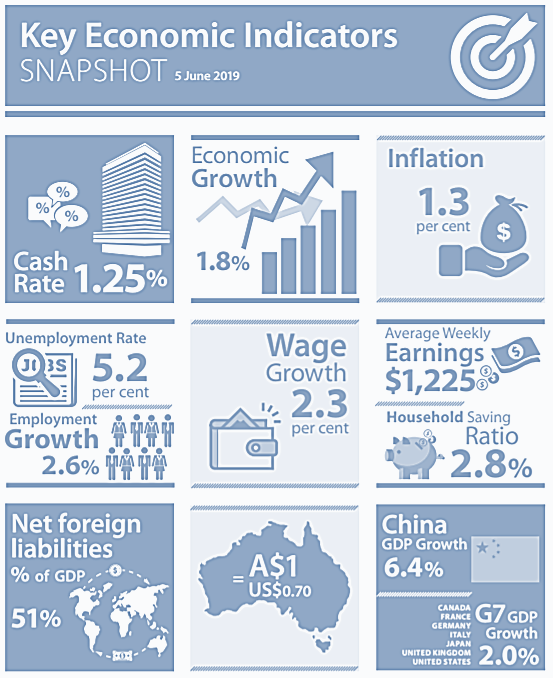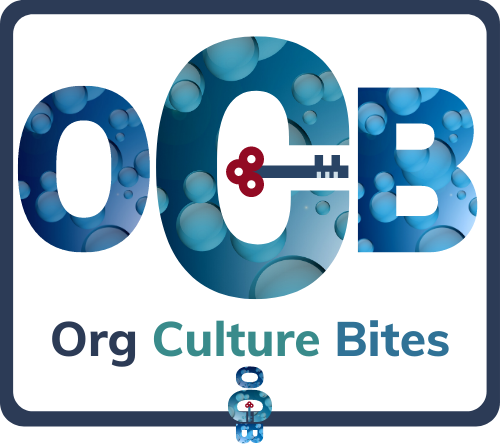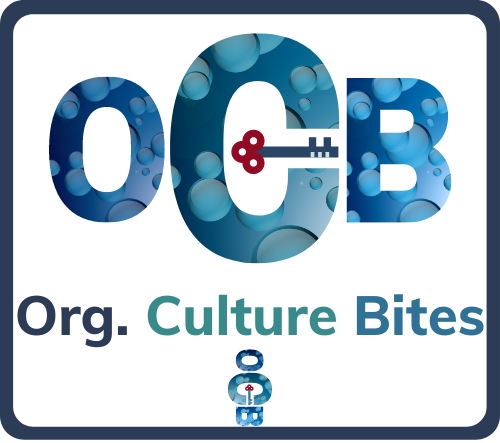-
 play_arrow
play_arrow
-
 play_arrow
play_arrow
-
 play_arrow
play_arrow
-
 play_arrow
play_arrow

Some themes to consider in our ‘current situation.’
- Early in June, the Reserve Bank of Australia dropped its official cash rate to 1.25%, the lowest rate since 1990 (when it was recorded at 17.5% in January).
- Australia is experiencing low economic growth and inflation as the world economy also continues to slow
- The Reserve Bank of Australia’s 2019 annual conference in April focused on ‘Low Wage Growth.’ According to the RBA Bulletin (March 2019), the Wage Price Index (WPI) remains subdued at between 2-4%. (See Graph 2 from the Bulletin below)
- Despite government policies and technological change driving greater energy efficiency, the price of energy continues to be increasing, along with the demand. There is a strong case towards innovation in renewable energy sources to increase diversity and affordability of our energy product mix.
- Technology platforms and AI continue to advance at a rapid rate, offering greater operational efficiency for organisations, employees and customers. Inherently, this is also creates opportunity for people to adapt to change, invest their time in more productive or, ‘valuable’ areas and develop skills for the future.
- Australia’s labour force participation rates have increased over time, particularly for working women. Coupled with greater mobility and children ‘leaving home’ to work in capital cities, interstate or abroad, we have also seen an increase in costs associated with typical ‘care-giver roles’ such as childcare and aged care.
When I read about these figures, the changing structure of our society and values, I can’t help but hear a scream for the need to look at our economy, businesses and practices differently. Surely throughout all of this pessimism and uncertainty about our economic future, we can find opportunity!?
Much of my work involves partnering with organisations to understand their culture and how it may be enabling them… or more often, hindering their performance. Typically, I find that organisational vision, cultures and values say one thing, but the internal mindset, management practices and day-to-day behaviours mean people are doing something quite different. I believe this is a real threat, holding back our people and economy from growth.
Overwhelmingly, people and organisations are caught up in the norms of yesterday, when the ways of leading and operating were hierarchically driven from the top. On the dysfunctional side of the spectrum, complex issues are not actively addressed, sometimes even avoided. Decisions making is not clear or inclusive and employees feel isolated, disengaged. They are not getting clear direction or support and are not always sure who to trust. They feel like they are working harder, but don’t always feel valued and in real terms, may even be getting paid less. They, like their organisations are stuck in a rut.
Whilst much depends on the nature of the business you are in, my suggestion is that if we want to achieve break-through in a new economic paradigm, then we also need to dramatically shift our personal and collective mindsets about what we expect and how we work in our next phase of economic and social development.
So how do we focus on the paradigm shift and make the change?
Many Australian organisations have already acted quickly, moving with the times to search for opportunity. Successful Australian technology company Atlassian declared in April this year they would set the right example and shift to 100% renewable energy by 2025. Not only were they taking greater responsibility as an organisation for sustainable resource usage, but they also see the benefit to employee engagement and productivity. Atlassian co-founder Mr Cannon-Brookes noted “We’re big on social responsibility … it will help us attract better employees,” (SMH: April 10, 2019).
Listed Australian company Energy Action, is all about looking at options to help Australian businesses reduce their energy footprint, find more economical ways of managing resource use as well as the associated rising costs.
Private ‘care industry’ organisation Rehab Management under the leadership of Marcella Romero has done amazing things for people requiring care in our community and built a successful, growing business at the same time. They have done this by focusing on helping people with injuries to rehabilitate and return to being engaged and productive at work. Through their sister company AimBig, they support and empower people with disabilities to secure, maintain and thrive in meaningful work. They attribute their success to being local, providing excellence in customer service, an intense focus on innovation, having a robust people and talent strategy as well as generating consistent, quality results.
When we take a look more broadly at our care industry though, the picture is not always as rosy. Not only are we hearing about profoundly disturbing practices in ‘aged care’ in particular, but we are also galvanising as a society to say this is no longer acceptable. We want better care standards and for our ‘less able’ members of society to continue to feel they are loved, valued and an important part of our community.
However this also comes at a cost. The aged industry is currently struggling with vulnerable funding models, low wages and the need for better training. (ABC, March 20, 2019). We hear similar challenges about the child care industry. (CIS, March 2018.)
Surely, with growing demand and reasonable regulation for quality standards in these sectors, we can find a way to innovate and make these industries more economically viable? Furthermore, if we can be performing well in some areas, could we be sharing and learning more from our success stories, building greater capability? There must be ways we can better invest in building skills for our community to be more productive now and into the future, encourage greater staff training and improve attractiveness of these professions for job seekers?
Perhaps additional options for flexibility, training and creating more engaging work environments for our employees to be productive, could come from more of our employers…
Rated by Thompson Reuters last year as the fourth most inclusive and diverse company in the world, global drinks business Diageo has recently announced 26 weeks paid parental leave for parents, regardless of gender. (News.com.au 23rd May, 2019).
Similarly, many organisations are now including flexible working options as part of their compelling and inclusive ‘Employer Brand.’ This year LinkedIn’s 2019 study into the top companies Australians want to work for, revealed that many of the most sought after organisations are offering development opportunities as well as flexible working practices (LinkedIn, 2019). According to Jason Laufer, LinkedIn’s Asia Pacific senior director of Talent and Learning Solutions in relation to the 2018 study, “What all these companies have in common is a strong employer brand — actively promoting diversity, well-being and flexibility,” he says. (Business Insider, March 21, 2018)
According to Aon Hewitt’s most recent report on Engagement Trends in Australia, reward & recognition continues to be an important driver of Engagement and productivity. This is beyond what people consider to be ‘paid fairly’ and more about recognition for their contribution and effort. The report also notes that “while managers certainly play a role in their employees’ engagement, this year we see that Senior Leadership has a continued presence as a top focus area – showcasing that agility and direction from leaders, especially in the current state of ever-present change – is critical. (Aon Hewitt, 2019)
The same report also highlights how important career development and employer brand elements also are; both listed in the top 4 opportunities to improve for attracting, retaining and engaging our top talent in Australia, in our region and also globally.
We have all of this information at our fingertips, but they key question really is:
“What will it take for your organisation to differentiate and compete beyond your competitors, break out of the trends, succeed and grow?”
Steve Tighe in his recent, thought provoking book Rethinking Strategy (Wiley, 2019) also challenges us to look at the world of strategy differently. Rather than focus on number crunching by a top few leaders, he suggests a more inclusive approach to strategy formulation. Involve your creative minds, cross functional operators and people at the frontline dealing with customers in your information gathering, insight generation and challenge the status quo.
Tighe asserts that the information we have should enable (not immobilise) decision making. In fact, information from diverse sources combined with creative thinking can help organisations perceive the future differently, help business respond to opportunity, to “reconceive strategic positioning and thrive in turbulence.”
I believe Australian businesses will drive performance in the coming ‘tough few years’ by being courageous and challenging the way things have typically been done in the past. They will actively step out of their comfort zones if they are no longer getting the right results. They will lead by being different, collectively creative to find new market opportunities. They will learn from practices in diverse industries and business types unlike their own. They will focus on their people, as well as forecasts to lead the next phase of innovation, adaption and opportunity.
It’s time for us the shake off stagnation and re-establish some new norms at work.
We have a lot to gain by ‘rethinking’ and ‘having a go.’
Image 1. RBA Data Snapshot, June 2019
Reference images

Image 2. RBA’s WPI insights by industry

Image 3. Aon Hewitt’s ‘Top 5 Opportunities’ for Engagement & productivity, 2018.

(Aon Hewitt, 2018 Trends in Global Employee Engagement report)
References
· CIS: https://www.cis.org.au/app/uploads/2018/08/rr37.pdf
· LinkedIn: https://www.linkedin.com/pulse/top-companies-2019-where-australia-wants-work-now-natalie-macdonald/
· Business Insider: https://www.businessinsider.com.au/the-perks-offered-by-the-25-companies-australians-most-want-to-work-for-in-2018-2018-3
· Tighe, Steve. (2019) Rethinking Strategy. Wiley. Melbourne.
© 2015 - 2019 Orgculturebites. Trademarks and brands are the property of orgculturebites


Post comments (0)